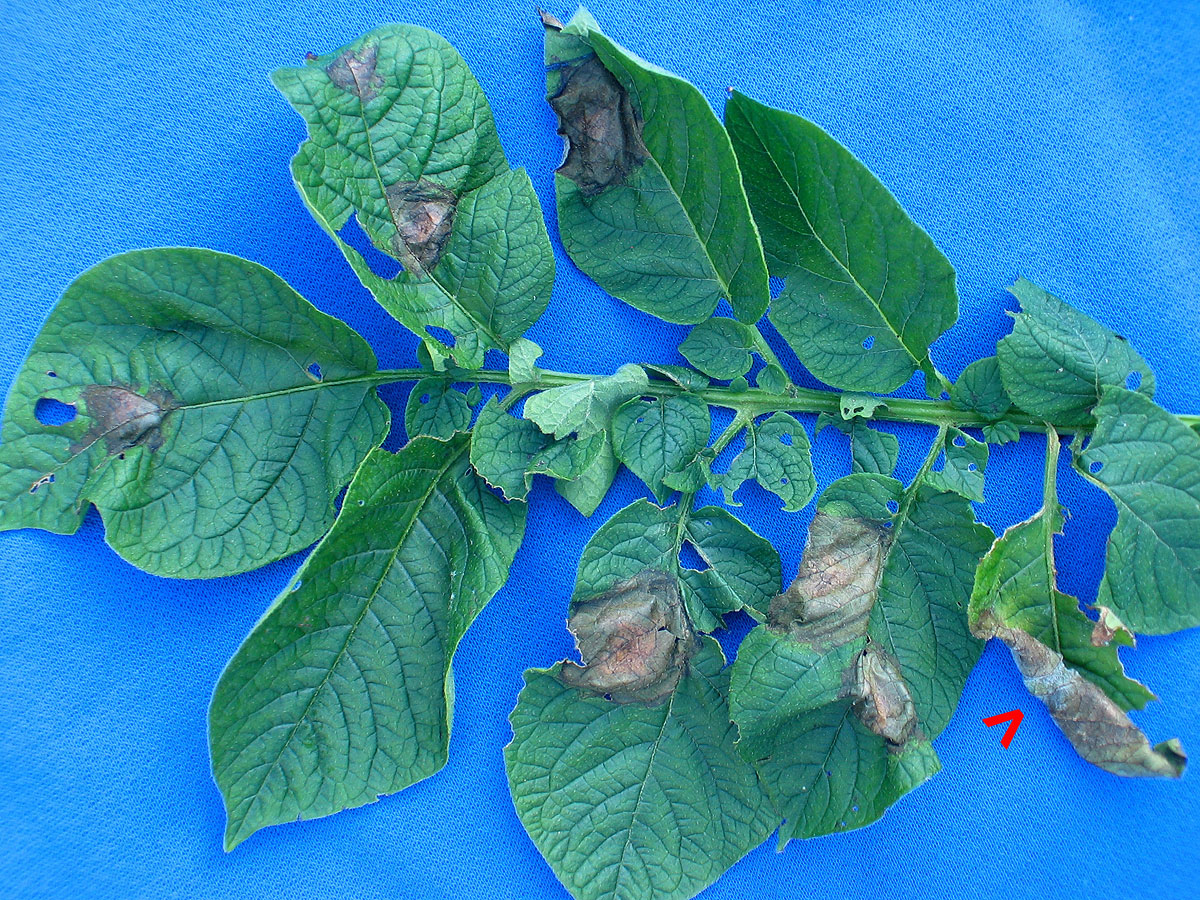
Confined fields were established, and initial trials completed near Fort Portal (Rwebitaba), Mbale (Buginyanya), and Kabale (Kachwekano).Īfter two seasons of field trials in the three locations, results will be compiled and submitted to Uganda’s National Biosafety Committee as part the process to approve the market release of the Victoria variety. In 2017, CIP and NARO began collaborating on compulsory assessments of the possible human and environmental risks that are required by Uganda’s National Biosafety Committee.
Late blight of potato full#
In 2015, the bioengineered potatoes were then transferred to Uganda and planted in experimental trials by NARO for five seasons.ĬIP and NARO have operated in full compliance with regulations from phytosanitary and biosafety regulatory agencies in Kenya and Uganda.Ĭonfined field trials conducted at NARO’s Kachwekano Zonal Agriculture Research Institute showed that the bioengineered Victoria is completely resistant to late blight, surviving exposure to the pathogen, which destroyed conventional potato plants growing nearby.


The bioengineered potatoes were then transferred to the CIP team in Kenya where more laboratory and greenhouse tests were conducted. Over the next four years, numerous greenhouse tests identified the most productive and diseaseresistant varieties. In 2008, scientists at the CIP laboratory in Peru transferred three resistance genes from Mexican and Argentinean wild species into Victoria, a farmer-preferred potato variety in Uganda. Working closely with Uganda’s National Research Organization (NARO), early research on these varieties has observed complete resistance to disease for the last five seasons. Targeting East African potato growing countries like Kenya, Rwanda and Uganda, CIP scientists have bioengineered four locally-grown potato varieties with three resistance (3R) genes. To develop and deliver bioengineered potatoes completely resistant to late blight to reduce the costs associated with potato production, the losses caused by the disease, and farmers’ exposure to harmful chemicals. In response, International Potato Center (CIP) scientists have taken a new approach using bioengineering to transfer resistance genes from potato wild relatives into varieties that are already popular with farmers and consumers. This situation leaves farmers with no option but to grow varieties with little or no resistance to the disease if there is a strong market for them – even if it means they have to spend a significant portion of their earnings on fungicides to ensure a good harvest. However, the late blight’s rapid evolution overcomes many of these resistant varieties.

Over the years, breeders have crossed potatoes with wild relatives to produce late blight-resistant varieties, but those varieties lacked other traits people wanted or had moderate levels of resistance, so adoption was limited. Due essentially to diseases such as late blight, potato yields are four times lower on average in developing countriesĬompared to the yields in industrialized nations.įarmers commonly use fungicides to control late blight, but because the cost of these agrochemicals can represent 10 to 25 percent the total value of a farmer’s potato harvest, their use significantly reduces family incomes and their application poses risks to humans and the environment.

In Uganda, where about 300,000 smallholder farmers grow potatoes, the disease can destroy as much as 60-100% of the crop. Late blight disease-caused by Phytophthora infestans-is a major constraint for potato farmers, costing them an estimated USD 3-10 billion per year globally.


 0 kommentar(er)
0 kommentar(er)
